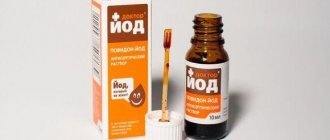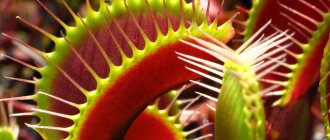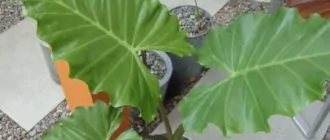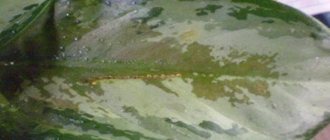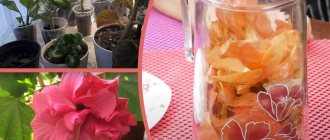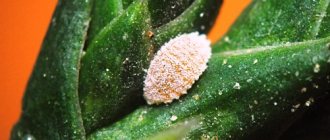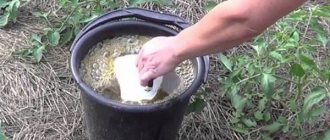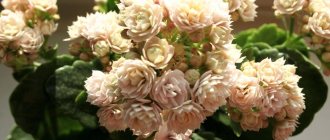How to fight pests with folk remedies
Traditional methods are most effective at the very beginning of infection, when insects have just begun to attack the plantings. In case of large-scale damage, the help of chemicals will be required.
Basic rules for making and using infusions
- Green raw materials (leaves, stems, flowers) are crushed. Then pour cold water, bring to a boil, or brew with boiling water.
- Rest for 2 – 3 hours. This time is enough for the medicinal substances to pass into the water.
- The grounds are filtered through a cloth. Add water to the infusion to the original volume.
- The liquid is filtered again so that small particles of raw materials do not clog the spray nozzle.
- Treatment of affected plants is carried out by spraying. The crowns, the lower part of the leaves, and the inner surface of the twisted leaf plates are especially carefully processed. Since pests especially like to settle in these places.
- When affected by aphids or spider mites, treatment is carried out three times, with an interval of 7–10 days. This time period is very important and should not be extended. Since this is exactly how many days it takes for an insect to develop from egg to maturity. So that new parasites do not have time to lay eggs again.
- The prepared decoction cannot be stored. It is used immediately after preparation.
Insect pests and diseases of mallow flower leaves
Gray rot. The causative agent is the fungus Botrytis cinerea Pers. Large brown merging spots without borders appear on the leaves and shoots. The tissues of the spots crack and fall out, and in the presence of moisture they become covered with a smoky-gray coating of sporulation.
Control measures. Collecting fallen leaves, complying with the requirements of agricultural cultivation techniques, spraying with one of the preparations: quick, pureflower, keeper, agromedicine.
Rust. The causative agent is the fungus Puccinia malvacearum Mont. Teleithopustules form on the underside of the leaves and on the petioles. At first they are brownish-brown, later ash-gray, dense, round, breaking through the epidermis. Affected leaves dry out quickly.
Control measures. Collecting plant residues, spraying with Bordeaux mixture or its substitutes.
Common red bug Pyrrhocoris apterus L. Large sucking insect 9-11 mm long and brightly colored. The body and abdominal rim are red, the head, antennae, legs, and spots on the elytra are black. Bedbugs overwinter in crevices in the bark of trunks and stumps. In spring they come to the surface and form large clusters. Females lay eggs from May. The larvae feed until autumn on the leaves of trees, shrubs and herbaceous plants. In autumn they descend and spend the winter.
Control measures. To protect flowers from these pests in the spring, spraying is carried out with one of the following preparations: fufanon, kinmiks, spark M, Inta-Vir.
Folk recipes against aphids and spider mites
To combat garden pests, decoctions of strong-smelling herbs containing toxic substances are widely used. The general principle of preparing infusions is described above.
Marigolds (Tagetis)
The entire above-ground part of the plant is used. Raw materials are taken 0.5 kg / 10 liters of water.
Mustard powder
The powder, in the amount of 100 grams, is poured with 1 liter of boiling water.
Tops of tomatoes, potatoes, nightshade
The ratio of tops and water is 1 kg/10 liters. Mandatory condition: the green mass must be without signs of spoilage or fungal infections. Otherwise, there is a risk instead of benefit, spreading fungal diseases throughout the area.
Wood ash (recipe 1)
- Pour sifted ash (3 kg) into a bucket of cold water and leave for 2 days.
- Strain thoroughly before use.
In addition to the repellent effect, the infusion of ash will work as a foliar feeding.
Wood ash (recipe 2)
Use the same amount of ingredients, but add boiling water. Can be used after 3 – 4 hours.
Ash and soap bathing
Effectively helps against aphids. The tops of infected plants are lowered into a container with a solution and washed manually. Even a single bath will get rid of a significant number of insects.
Take a solution prepared according to any method described above. Add 300 grams of planed laundry soap. You can use liquid green soap - 130 ml.
Tobacco dust
Tobacco dust powder, or dry parts of the plant – 200 g, steam with 5 liters of boiling water. After cooling, bring to 10 l.
Pine needles
Pine needles additionally have a stimulating effect. Pour 1 kg of pine or fir needles with 4 liters of water. Leave for a week, stirring occasionally. Dilute the prepared liquid by half before use.
Fragrant flowers: lavender, gypsophila, nasturtium, mateola, spices, marigold and calendula
There are plants that, when adjacent to other flowers, are able to create a barrier against pests and diseases. These are the so-called phytoncide plants! These include gypsophila, lavender, matiola bicornuum, nasturtium, as well as spicy aromatic herbs - basil, coriander, mint, sage, thyme, lemon balm, even the usual dill and parsley, as well as the previously mentioned wormwood.
Why not grow a small garden, or a fragrant mini-vegetable garden on the balcony? The smell of such plants will repel pests. Thus, once on the balcony, indoor flowers will be protected by natural flavors! And by planting aromatic plants and herbs in the garden plot, you will not only decorate the flowerbed, but also protect the flowers from the invasion of “uninvited guests”. Double benefit!
spices and matthiol
Some plants act not only above the ground, but also in the soil, protecting neighbors from parasites and bacteria. Such universal flowers include calendula and marigolds. By sowing the empty spaces in the flowerbed with them, you will protect the flowers from fungal and viral diseases. By the way, an infusion is also made from marigold flowers, which is successfully used in the fight against pests and diseases! To do this, collect faded marigolds along with the leaves, put them in a saucepan and fill them with hot water 1:1, let them brew for 2 days. The strained infusion can be used for spraying against aphids, mites, whiteflies, thrips, and for the treatment of fungal diseases. It will also be useful for seedlings – against “black leg”.
Codling moths, moths, copperheads, sawflies, small caterpillars
Preventive spraying is carried out during the flowering period, during the summer of butterflies: every 5 days.
Sagebrush
Steam a kilogram of bitter herb with a bucket of boiling water. After cooling, strain.
Red hot pepper
Prepare an infusion from 1 kg of fruit and 10 liters of water, strain, and put in a cool, dark place. To spray, dilute 500 ml of liquid with ten liters of water.
Onion
Chop 100 g of onion, add 1 liter of cold water, leave without boiling for 24 hours.
How to let a cat dig in a pot
To prevent your fluffy from “confusing” a flower pot with his toilet, you should limit his ability to dig in the ground. To do this, various obstacles are placed in the pot, which nevertheless allow water to pass freely during watering.
To protect against cats, they most often use:
- large stones or crushed stone. This barrier also has decorative properties. Beautifully placed stones add additional aesthetics to a potted plant;
- large sea shells;
- Pine cones. Such a barrier is not very effective, since the cat can easily push the cone to the side;
- aluminium foil. Cats really don't like walking on this material. The disadvantage of the method is its unaesthetic appearance;
- Double-sided tape. Upon contact, the adhesive tape will stick to the paws, which is unlikely to be pleasant. The animal will remember this and will avoid such an obstacle in the future. It is also important to accustom the animal to the tray. If your pet categorically refuses to acknowledge its toilet, you should analyze the origins of this behavior. A furry pet ignores the tray intended for it for the following reasons:
- insufficient cleanliness. Cats don't like to go into a dirty litter box. If the owners neglect this factor, the pet will try to find another place for the toilet;
- inconvenient location. If the cat cannot easily approach the litter box at any time, he will most likely look for an “alternative” option. Also, fluffies do not like to visit the toilet located in a place that is too accessible;
- uncomfortable tray. It should be easy for the cat to climb in and out of the container with the filler;
- presence of a second animal. If one of the cats visits the litter box, but the other does not, you need to provide the second pet with a “personal” toilet;
- tray material. Some types of plastics emit an unpleasant odor. You should purchase containers made from quality materials.
Let's watch a useful video about protecting indoor plants from pets:
Ways to combat Colorado potato beetles
Mixtures prepared independently are aimed at repelling adult insects. Treatment is carried out before the appearance of beetles and during their summer.
Walnut leaves
Dry leaves (2 - 3 kg), add 10 liters of water, infuse for 3 - 5 days.
Birch tar
Dilute a 100 ml bottle of tar in a bucket of water. Spray potato tops every 2 - 3 days. You can use tar soap - 100 g bar.
Multicomponent mixture
Pour all ingredients into a bucket of water and bring to a boil. After 12 hours you can use it by thoroughly watering the leaves.
Compound:
- wormwood - 0.3 kg;
- hot pepper (powder) - 1.5 tablespoons;
- garlic - 0.2 kg;
- soap - 50 g;
- hemlock - 0.2 kg
How to stop a cat from eating house flowers
Indoor plants can be sprayed with various compounds, the taste of which the cat will not like. There are special sprays that can be bought at a pet store.
You can also prepare a repellent yourself. To do this, add aloe juice, red pepper, and sour apple juice to a spray bottle with water. Plants treated with this composition will become unpalatable to the cat.
However, before spraying, you need to make sure that the substance will not harm the flower. To do this, the composition is tested on 1-2 leaves, and only then the whole flower is treated.
Options for getting rid of pests of indoor plants
In an apartment, the choice of method is not as wide as in open ground.
When processing home flowers, special attention is paid to shelves, windows, window sills, and flowerpots. That is, those places that come into contact with the plant. They should also be washed well. Because they may contain insects or eggs, which will become a source of new infection.
Laundry soap
The most common laundry soap showed the greatest effectiveness. Regular “bath days” using soap foam are an excellent prevention of the spread of parasites.
Soap foam is applied to specimens affected by spider mites or aphids. Then after 5-10 minutes everything is washed off with a soft sponge under a cool shower.
Alcohol
Alcohol helps against spider mites. Use a cotton pad soaked in alcohol to wipe the infected leaves. The procedure is carried out as ticks are detected.
Garlic infusion
Chopped garlic clove 5 grams, leave for 24 hours in a liter of cold water. Wipe or spray the leaves with a fresh solution. Use against aphids, scale insects, whiteflies.
Tansy
Brew a tablespoon of dry tansy (sold at the pharmacy) with 1.5 liters of boiling water. After cooling, strain. Treat against scale insects, scale insects, and aphids.
If protecting your garden and garden from pests using folk methods does not bring any effect, or it is not very convenient to use them, for example, in large collections, there is always the possibility of using chemicals. An article about industrial products will help you decide on the choice of a suitable drug.
Choosing the right flowers for a house with a cat
Care should be taken to ensure that contact between the animal and flowers does not harm the health of the pet. We are talking about poisonous plants. Many beautiful house plants have poisonous sap.
If a cat chews such a plant, there is a high risk of food poisoning. At the first suspicious symptoms, the animal should be taken to the veterinarian.
If the owners doubt that they will be able to wean the animal from the habit of gnawing flowers, the following representatives of the flora should be especially carefully isolated:
- dieffenbachia;
- oleander;
- philodendron;
- calla;
- spurge;
- begonia;
- hydrangea;
- ivy, etc.
To completely guarantee the safety of your four-legged friend, you can completely abandon these varieties and give them to friends who do not have pets.
Flower protection frame
To give your cat less opportunity to come into contact with house plants, flowers can be hung on the walls in pots. If the cat is dexterous and persistent and gets plants even in hard-to-reach places, the flower can be placed in a bird cage.
This rather original solution will diversify the design of the room and solve the problem of a pet encroaching on its favorite flower.
